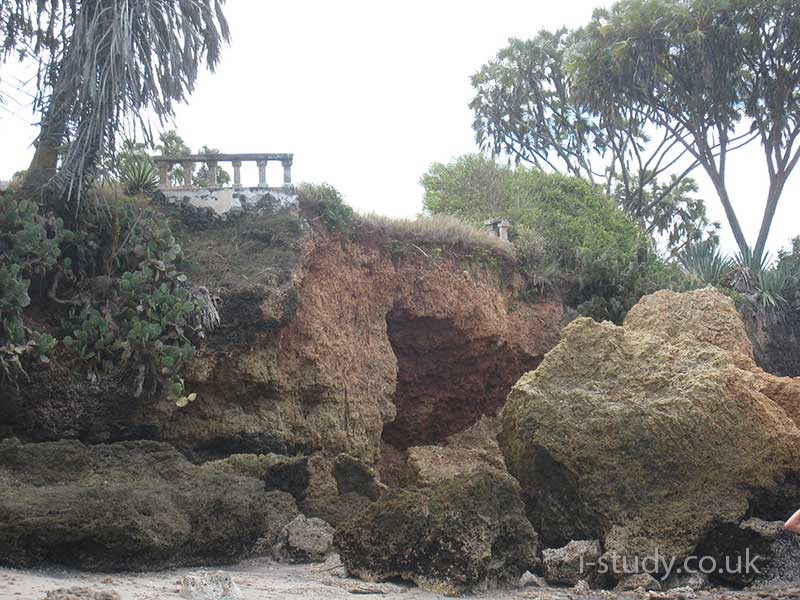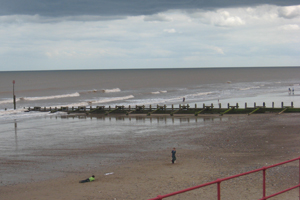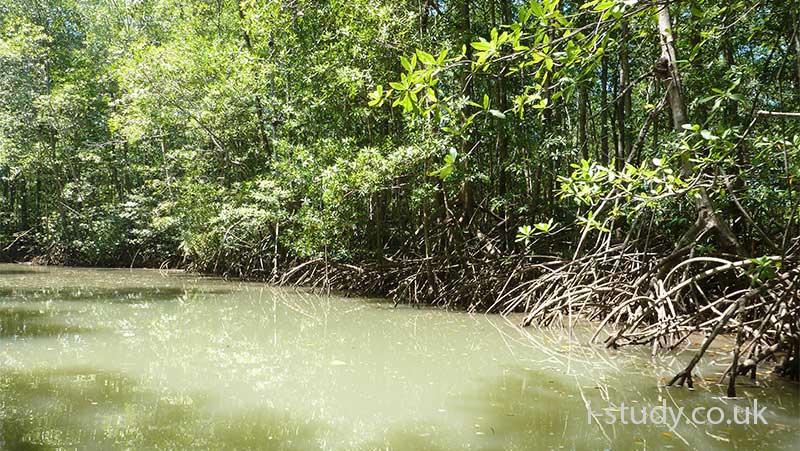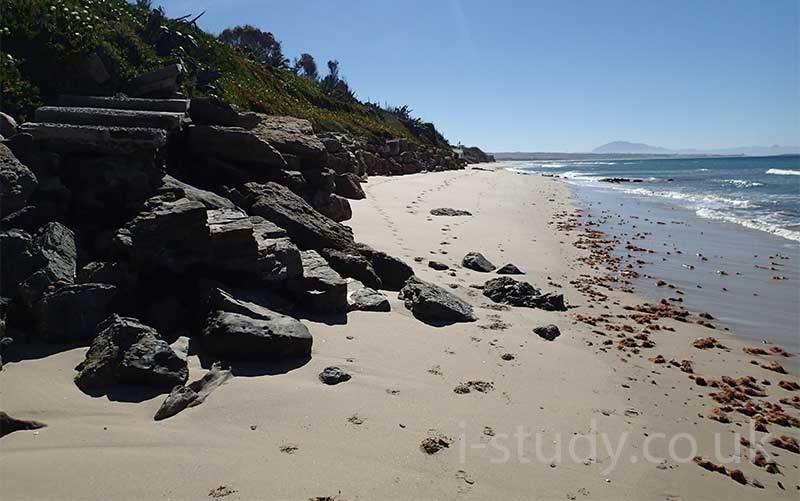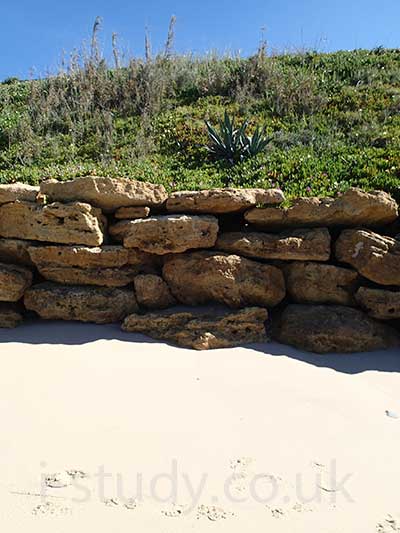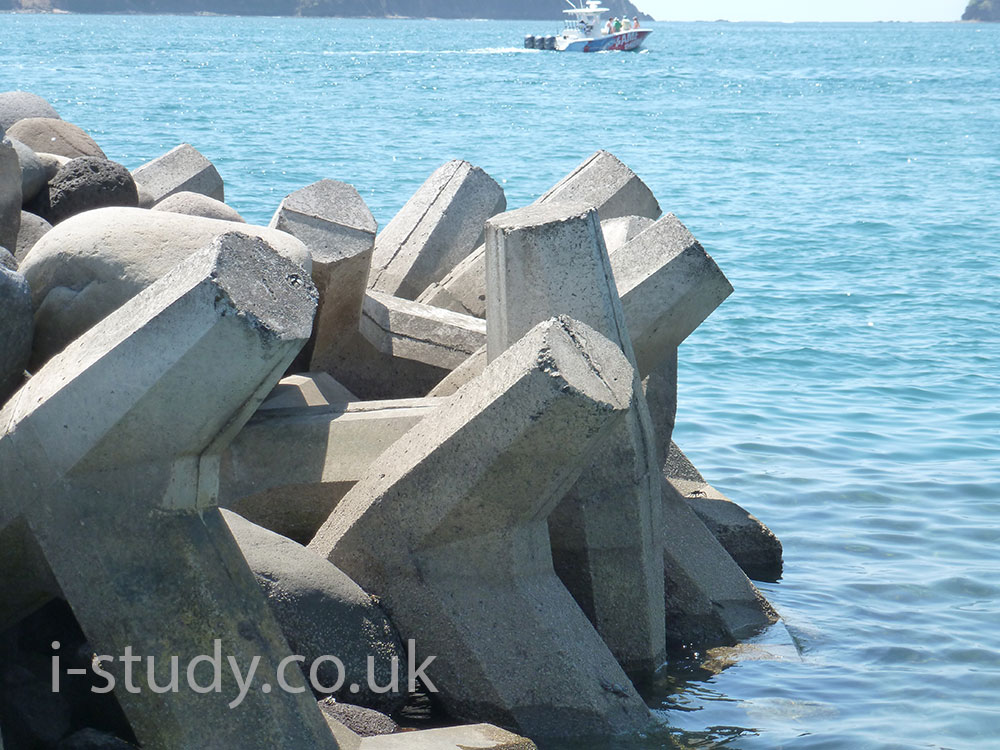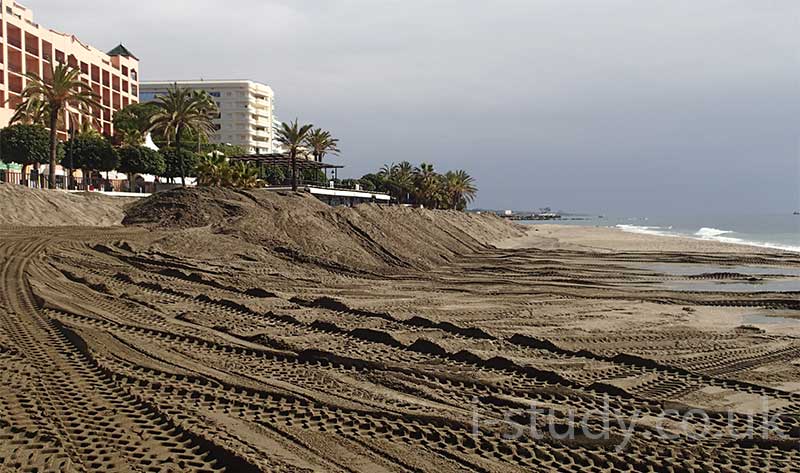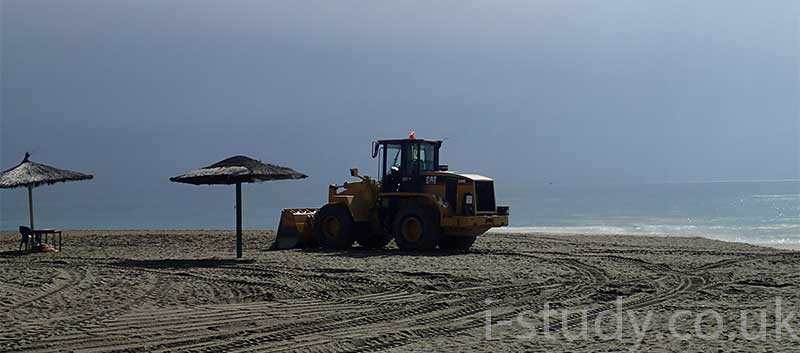Areas of softer rock erode more rapidly than bands of hard rock. The result of this uneven erosion is the formation of bays with rocky outcrops of headland at the ends.
Bays can vary significantly in length from a couple of hundred meters to many kilometers.
- Draw and label a diagram showing a bay and headland, include labels identifying hard and soft rock.
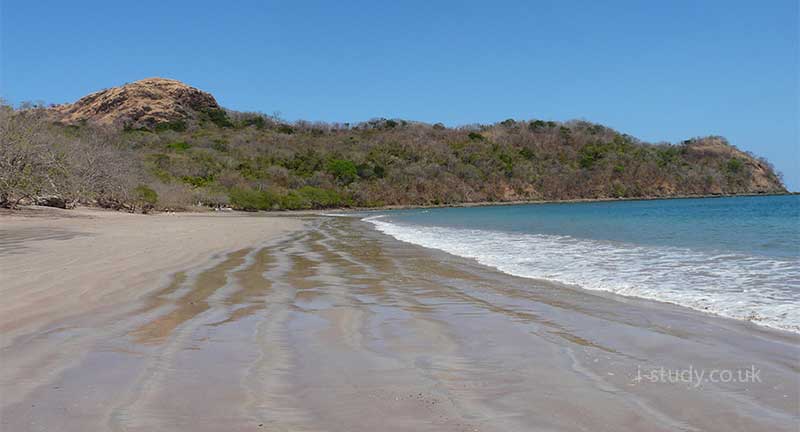 Fig 5.6 Sandy bay with headland; Playa Conchal, Costa Rica
Fig 5.6 Sandy bay with headland; Playa Conchal, Costa Rica
Headlands are exposed to the full force of the waves. As they erode they often form distinctive characteristics.
- The hydraulic action of the waves widens cracks in the rock eventually forming caves.
- Sand in the waves causes abrasion and eventually the cave may erode completely through the headland to form an arch.
- Over time the arch becomes wider until it cannot support the top which collapses leaving a stack.
- The base of the stack continues to be eroded until it collapses and leaves a stump.
The Australian southern coast is famous for these landforms, named the 12 apostles.
 Figure 5.7 Headland characteristics
Figure 5.7 Headland characteristics
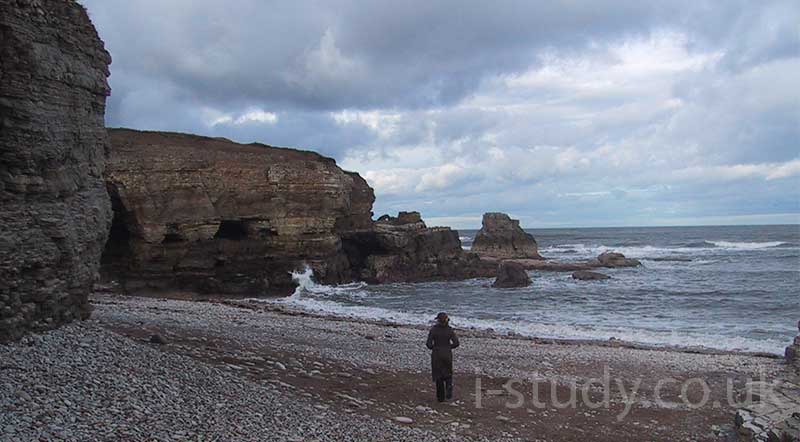 Fig 5.8 Faults, caves, stack and stump: South Shields, UK
Fig 5.8 Faults, caves, stack and stump: South Shields, UK
Wave Cut Notches and Platforms
Notches
These form along areas of harder rock where the base of cliffs are eroded, undercutting them until sections fall.
The section eroded at the base of the cliff is called a wave cut notch. See Figure 5.9.
Platforms
As this is repeated the cliff retreats leaving a platform of hard rock, often covered at high tide but exposed at low tide. See Figure 5.10
The debris from fallen sections of the cliff is often spread across the platform.
Older wavecut platforms are likely to have a smoother surface with channels where the water returns to the sea. Newer platforms are likely to be uneven and have stumps remaining.
Tasks
- Draw and label your own diagram of how erosion leads to wave cut notches.
- Draw and label your own diagram showing how wave cut platforms are formed.
- Explain why wave cut platforms form along stretches of cliff.
 Figure 5.9 Wave cut notch at low tide: UK
Figure 5.9 Wave cut notch at low tide: UK
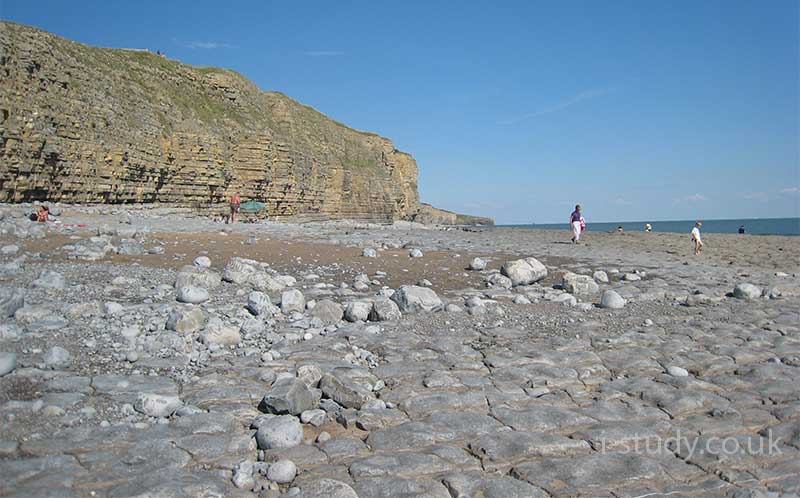 Figure 5.10 Wave cut platform at low tide: UK
Figure 5.10 Wave cut platform at low tide: UK
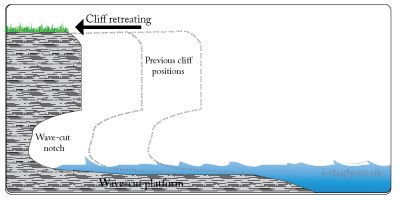 Figure 5.11 Wave cut platform diagram
Figure 5.11 Wave cut platform diagram
In areas where the coastline is sheltered from the full force of the waves the water has less energy and deposits material. Headlands often protect sections of bays from waves coming in at an angle. Deposited material forms distinctive geographical features.
Bars: these are ridges of sand that extend across bays or estuaries blocking them from the sea.
Tombolos: these are bars that stretch out to a nearby island.
Spits: these form at indented sections of coast or besides headlands. They stretch out as a sandy ridge and are often curved at the end due to the effects of changing winds on the wave direction.
Saltmarsh usually forms behind spits as further deposition occurs and grasses start to establish.
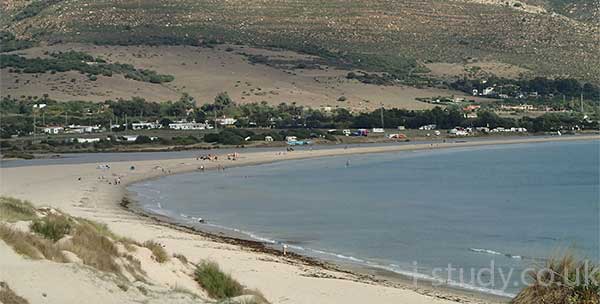 Figure 5.12 Bar, Tariffa, Spain
Figure 5.12 Bar, Tariffa, Spain
 Figure 5.13 Tombolo, Thailand
Figure 5.13 Tombolo, Thailand
Sand dunes are banks or ridges of sand that form at the back of beaches. They trap sand blown by the wind and gradually increase in size.
Grasses and other vegetation often establish themselves overtime and these help stablise the dunes by trapping the sand. The roots also hold the sand in place. Dunes often gradually change shape and size as sand is continually eroded and deposited.
Sand dunes form an important ecosystem providing a habitat for a range of plant and insect life.
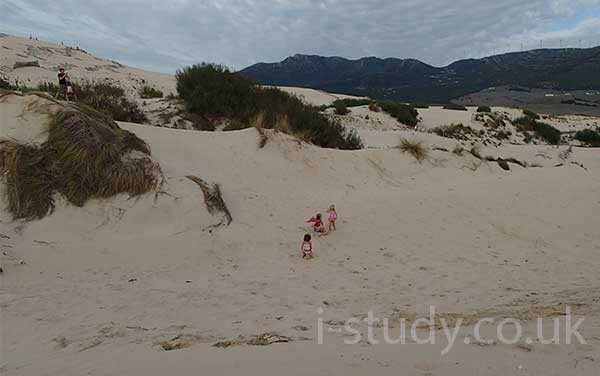 Figure 5.14 Sand dunes, Tarifa, Spain
Figure 5.14 Sand dunes, Tarifa, Spain



